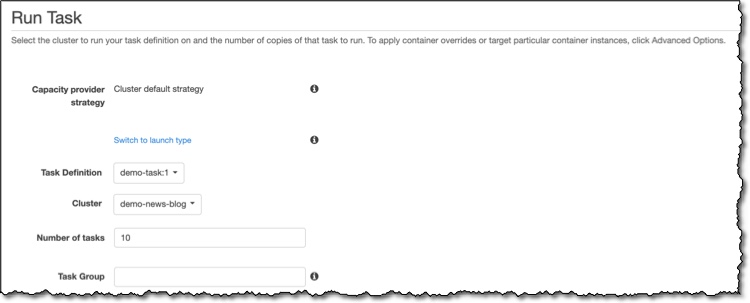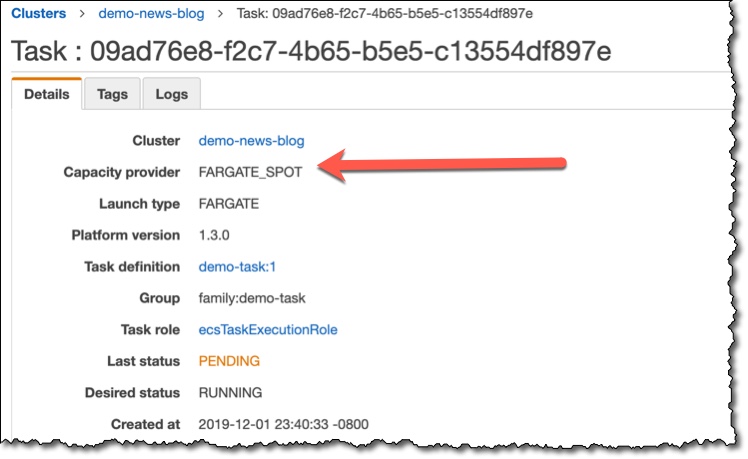AWS News Blog
AWS Fargate Spot Now Generally Available
|
|
Today at AWS re:Invent 2019 we announced AWS Fargate Spot. Fargate Spot is a new capability on AWS Fargate that can run interruption tolerant Amazon Elastic Container Service (Amazon ECS) Tasks at up to a 70% discount off the Fargate price.
If you are familiar with EC2 Spot Instances, the concept is the same. We use spare capacity in the AWS cloud to run your tasks. When the capacity for Fargate Spot is available, you will be able to launch tasks based on your specified request. When AWS needs the capacity back, tasks running on Fargate Spot will be interrupted with two minutes of notification. If the capacity for Fargate Spot stops being available, Fargate will scale down tasks running on Fargate Spot while maintaining any regular tasks you are running.
As your tasks could be interrupted, you should not run tasks on Fargate Spot that cannot tolerate interruptions. However, for your fault-tolerant workloads, this feature enables you to optimize your costs.
The service is an obvious fit for parallelizable workloads like image rendering, Monte Carlo simulations, and genomic processing. However, customers can also use Fargate Spot for tasks that run as a part of ECS services such as websites and APIs which require high availability.
When configuring your Service Autoscaling policy, you can specify the minimum number of regular tasks that should run at all times and then add tasks running on Fargate Spot to improve service performance in a cost-efficient way. When the capacity for Fargate Spot is available, the Scheduler will launch tasks to meet your request. If the capacity for Fargate Spot stops being available, Fargate Spot will scale down, while maintaining the minimum number of regular tasks to ensure the application’s availability.
So let us take a look at how we can get started using AWS Fargate Spot.
First, I create a new Fargate cluster inside of the Amazon ECS console, I choose Networking only, and I follow the wizard to complete the process.

Once my cluster is created, I need to add a capacity provider, by default, my cluster has two capacity providers FARGATE and FARGATE_SPOT.

To use the FARGATE_SPOT capacity provider, I update my cluster and set the default provider to use FARGATE_SPOT, I press the Update Cluster button and then select FARGATE_SPOT as the default capacity provider and click Update.

I then run a task in the cluster in the usual way. I select my task definition and enter that I want 10 tasks. Then after configuring VPC and security groups, I click Run Task

Now the 10 tasks run, but rather than using regular Fargate infrastructure, they use Fargate Spot. If I peek inside one of the tasks, I can verify that the task is indeed using the FARGATE-SPOT capacity provider.

So that’s how you get started with Fargate Spot, you can try yourself right now.
A few weeks ago, we saw the release of Compute Savings Plans (of which Fargate is a part) and now with Fargate Spot, customers can save a great deal of money and run many different types of applications; there has never been a better time to be using Fargate.
AWS Fargate Spot is available in all AWS Regions where AWS Fargate is available, so you can try it yourself today.
— Martin